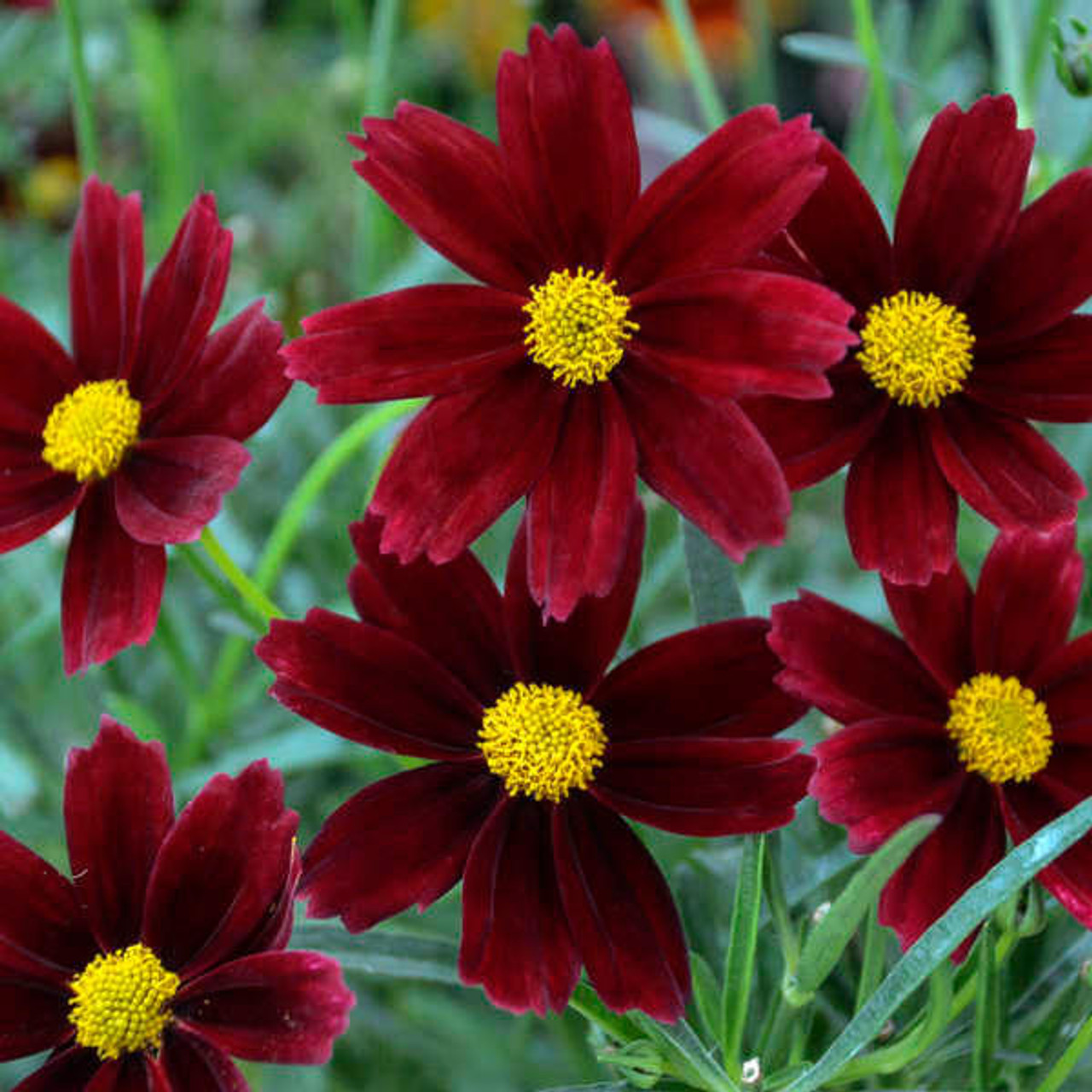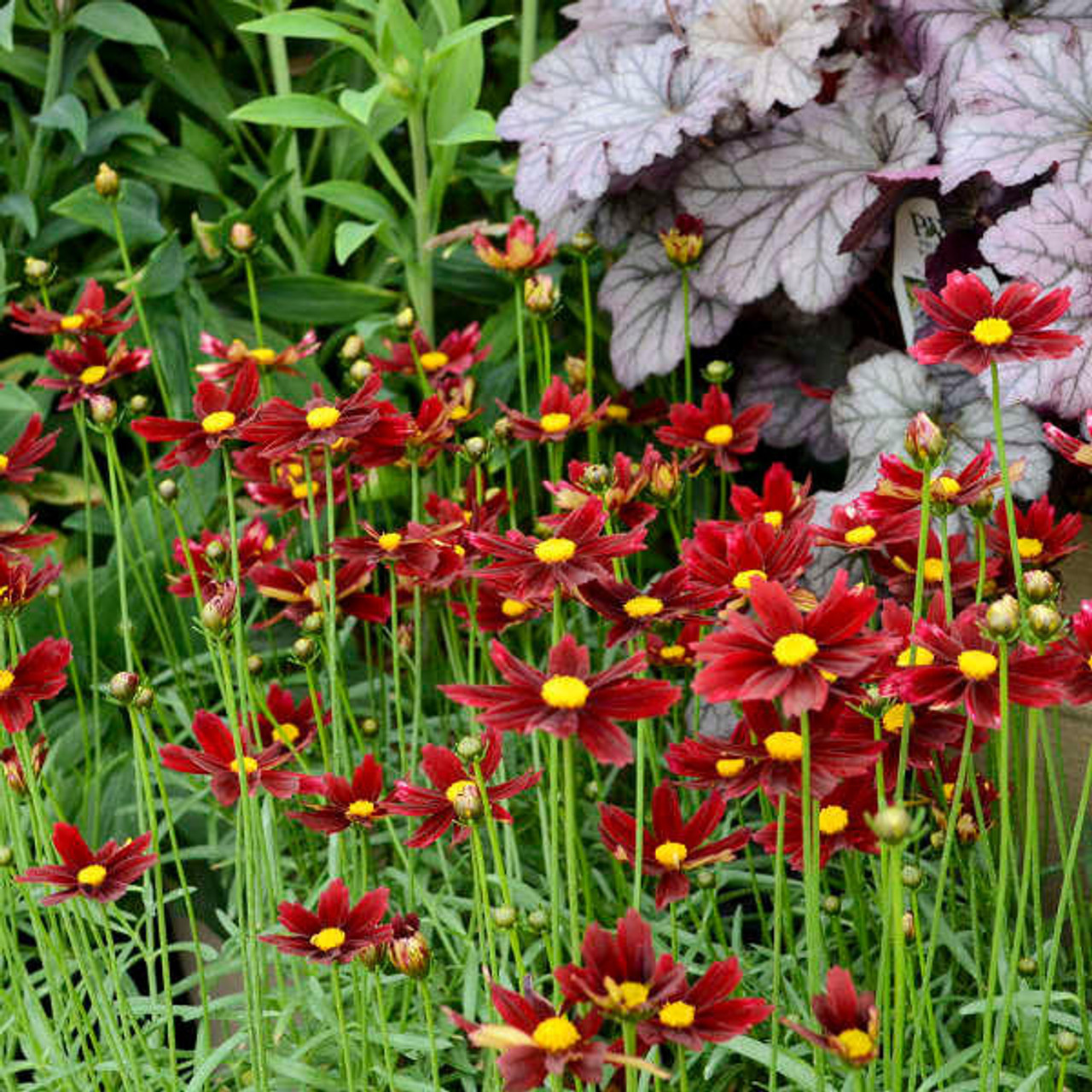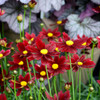Product Description
Coreopsis Li'l Bang 'Red Elf' (10)ct Quarts
LI'L BANG™ series
Common Name: Tickseed
Add a fiery burst of color to your garden with Coreopsis Li'l Bang™ 'Red Elf'! This compact and captivating tickseed delivers a profusion of unique, red-hued blooms that will ignite your landscape with long-lasting beauty.
- Ruby Red Blooms with a Twist: 'Red Elf' stands out with its large, daisy-like flowers that boast a rich, ruby red hue. The petals are often tipped with a delicate white frosting, adding a touch of whimsy to the vibrant display. These eye-catching blooms, accented by a sunny yellow center, create a captivating spectacle that lasts for weeks.
- Compact and Prolific: This Coreopsis forms a compact, well-branched mound of deep green foliage, reaching a height of only 9-12 inches and a width of 12-18 inches. Its prolific blooming habit ensures a constant supply of vibrant color from early summer to fall.
- Versatile Applications: 'Red Elf' is a versatile addition to any sunny garden. Use it to brighten borders, add a pop of color to containers, create a cheerful display in rock gardens, or even naturalize it in meadows and wildflower gardens. Its compact size makes it perfect for smaller spaces and patio gardens.
- Easy Care and Adaptable: This Coreopsis thrives in full sun and well-drained soil, making it a low-maintenance choice for busy gardeners. It is also drought tolerant and deer resistant, making it a reliable performer in challenging conditions.
- Pollinator Paradise: The cheerful blooms of 'Red Elf' are a magnet for bees, butterflies, and other beneficial insects, adding an element of biodiversity and ecological value to your garden.
Key Features:
- Ruby Red Flowers: Vibrant, red-hued blooms with a unique white frosting create a dazzling display.
- Compact Habit: Perfect for borders, containers, and small gardens.
- Prolific Bloomer: Provides long-lasting color from early summer to fall.
- Easy Care: Thrives in full sun and well-drained soil.
- Drought and Deer Tolerant: A reliable choice for challenging conditions.
- Attracts Pollinators: Supports bees, butterflies, and other beneficial insects.
Plant Specifications:
- Hardiness Zones: 5-9
- Mature Size: 9-12 inches tall, 12-18 inches wide
- Sunlight: Full sun (tolerates partial shade in hot climates)
- Soil: Well-drained soil
- Water: Dry to medium moisture
Ignite your garden with the fiery beauty of Coreopsis Li'l Bang™ 'Red Elf'!
Height: 8.0-12.0 Inches
Spread: 12.0-18.0 Inches
Hardiness Zones: 5,6,7,8,9
Flower Color: Yellow Shades, Red shades
Foliage Color: Green shades
Full Sun (> 6 hrs. Direct Sun)
Low to Average Water Needs
Poor to Fertile Soil Quality
Bloomtime: Early Summer - Early Fall
Long Blooming
Attracts Butterflies
Deer Resistant
Growth Rate: Medium
Border Plant, Container, Cut Flower, Drought Tolerant, Easy To Grow, Mass Planting
Ten (10) plants in quart containers per flat (or tray).
Other Details
The most important part of the plant is its root system. Healthy roots are the foundation of a healthy, vibrant plant. The type of plug container used is based on the specific needs of the plants. Perennials offered as bare root traditionally perform better when planted as bare root.Planted in a specialized mix, potted plants have well established root systems. Top growth stage will vary depending on the current life cycle and time of year when shipped. In Winter and early Spring dormant plants may be shipped. Dormant plants may be planted right away, even before the last frost date.
Most bare root varieties are field grown for at least one season, though Hemerocallis and Hosta are grown for two seasons. The bulk of the soil is removed during the harvesting process and the tops of most varieties are trimmed back to the crown. They are graded, packed in shredded aspen or sphagnum moss and stored in freezers until ready to be shipped.
See our Container Sizes and Bare Root Perennials pages for more information.
Plant information and care is provided in the Overview section, Plant Genus Page and general information is provided in the Planting Care & Guides. Additional questions can be asked on each Plant page.
Plant Spacing: Using the maximum mature spread or width of a plant to guide spacing, ensures space to grow to full size. To fill an area sooner, plant them closer together. Just remember, future thinning or transplanting may be needed.
Water: Keep a close eye on newly planted perennials, especially throughout the first growing year. Most early plant loss is due to too much or too little water!








